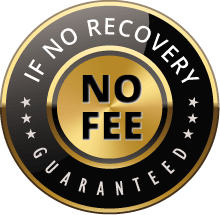 Fast Action Protects Your Property and Your Claim
Fast Action Protects Your Property and Your Claim
Late-season wind and hailstorms often catch commercial property owners off guard. While many think of spring as “storm season, ” severe weather patterns can persist well into fall and early winter—bringing damaging winds, hail, and debris impacts that compromise roofs, windows, and building envelopes.
For property owners, responding quickly and correctly after a storm can make the difference between a smooth insurance recovery and a prolonged dispute. The Voss Law Firm has represented hundreds of commercial clients facing storm-related property claims. Below, weoutline the critical steps to take after wind or hail damage and how to protect your right to full compensation.
1. Ensure Safety and Prevent Further Damage
Immediately after a storm, prioritize safety for tenants, employees, and maintenance staff. Inspect for hazards such as downed power lines, broken glass, or structural instability.
Once it’s safe, take temporary measures to mitigate further damage:
● Board up broken windows or doors.
● Tarp damaged roofs.
● Shut off water or electricity in compromised areas.
Insurers require policyholders to take “reasonable steps” to protect property from further harm. Failure to do so can reduce claim payouts.
2. Document Everything Immediately
Comprehensive documentation is the foundation of a successful insurance claim.
● Take high-resolution photos and videos of all affected areas, including roofs, facades, interiors, and damaged equipment.
● Record the date, time, and details of the storm.
● Keep samples of damaged materials if possible (e.g., roofing shingles, insulation, ceiling tiles).
Maintain a log of all communications, contractor visits, and temporary repairs. This evidence demonstrates diligence and helps rebut insurer allegations of pre-existing or maintenance-related damage.
3. Notify Your Insurer Promptly
Most policies require that notice of loss be provided “as soon as practicable. ” Delays in reporting can be grounds for denial. Submit your initial claim promptly, even if you are still gathering estimates. Provide only factual details initially—avoid making speculative statements about causes or costs until full assessments are complete.
4. Schedule an Independent Damage Assessment
Insurers will send their own adjusters, but it’s wise to retain an independent professional to evaluate the damage. A public adjuster, roofing consultant, or engineer working on your behalf can identify hidden structural damage that an insurance adjuster might overlook—especially with roofing systems or HVAC equipment.
5. Watch for Common Claim Disputes
Insurers frequently challenge or minimize wind and hail claims using tactics such as:
● Attributing damage to “wear and tear” rather than storm impact.
● Claiming that roof punctures or leaks pre-dated the event.
● Applying depreciation or partial-repair settlements instead of full replacement.
Be prepared to counter these tactics with expert documentation and, if necessary, legal representation.
6. Secure Detailed Repair Estimates
Obtain written estimates from licensed contractors familiar with commercial roofing and exterior systems. Ensure that the scope of work covers all storm-related damages, including flashing, insulation, HVAC curbs, and skylights. Detailed estimates support the full valuation of your claim and help prevent underpayment.
7. Keep Records of Temporary Repairs and Expenses
Costs incurred to mitigate damage—such as tarping, water extraction, or emergency power—are typically reimbursable under most commercial property policies. Keep receipts and invoices for all emergency work, and maintain a running ledger of related expenses.
8. Understand Partial Loss vs. Total Replacement
Many property owners settle too quickly for “patch” repairs when their roof system actually requires full replacement under policy terms. If the damage compromises the performance or lifespan of the system, full replacement may be warranted. Consult with both a roofing expert and a property damage attorney before accepting a settlement.
9. Review Business Interruption Impacts
If your operations were disrupted by storm damage or power loss, document downtime, lost revenue, and extra expenses such as relocation or temporary facilities. This information supports a business interruption or extra expense claim—often overlooked but potentially substantial.
10. When to Call a Property Damage Attorney
If your insurer delays, undervalues, or denies your claim, professional legal representation can make the difference. The Voss Law Firm specializes in complex commercial storm claims, ensuring that policyholders receive the full value of their coverage.
Our attorneys handle disputes involving:
● Roof damage and total replacement claims
● Wind and hail exclusions
● Business interruption losses
● Improper depreciation or partial payments
Preparation and Advocacy Make Recovery Faster
Late-season storms can inflict serious damage on commercial properties—but a strategic response and thorough documentation process will protect your rights. If you’re facing a delayed or disputed storm damage claim, contact The Voss Law Firm. Our experienced team helps commercial property owners nationwide navigate insurance disputes, recover full compensation, and restore operations quickly.



















